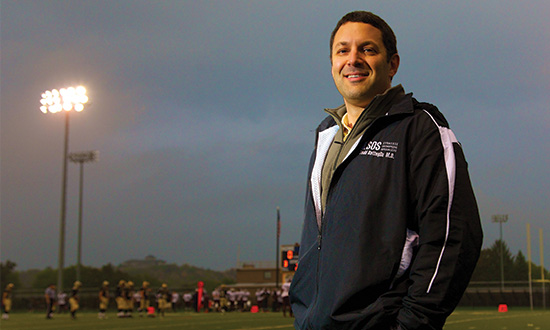
Articular cartilage is the coating that cushions the surface of each bone inside every joint. It is smooth, strong, and has superb shock-absorbing properties. But, unfortunately, it is not indestructible...cartilage can be injured in numerous ways. The most common is straightforward and gradual wear-and-tear, which is what we all know as “arthritis.” For many years, we have effectively treated patients with arthritis with medications, steroid injections, braces, and from a surgical perspective, with joint replacement.
Joint replacement is an effective and long-lasting solution for severe cartilage damage, particularly for the older individual. But athletes and other younger patients may also be affected by joint cartilage injuries. These injuries often arise from a specific trauma – such as twisting, cutting or jumping – and typically involve a smaller or more focal area of damage, as compared to the diffuse damage found in standard arthritis. Such cartilage injuries are not uncommon – for instance, it is estimated that up to 50% of patients who tear their ACL, and up to 90% of patients who dislocate their patella (kneecap), also have some degree of cartilage injury.
Also, there is a process to follow to ensure that all relevant information is gathered from a patient. It is necessary to obtain each patient’s medical history, at every visit to note any changes. A nurse or medical assistant typically gathers it. The history consists of past medical issues (prior medical problems and surgeries, medications, allergies or drug reactions); family medical history; and social history (smoking, alcohol and drug use, employment and recreational activities). These can all shed light on the medical issue the patient is being seen for that day.
For many years, treatments for these injuries were limited or nonexistent. If a patient was not old enough for joint replacement, or if the cartilage damage was not widespread in the joint, the patient had little option but to live with the pain. Over the last 10-15 years, however, sports physicians have developed numerous new technologies to treat cartilage damage in these younger individuals, most of which are focused on treatment of knee problems. These include techniques to transfer cartilage from one area of a joint to another, and techniques to transplant cartilage from a deceased donor to an injured patient. We have also developed methods to regrow cartilage using cells from the patient, and other methods that can regrow cartilage using artificial substances or even donor cartilage cells. Although these types of surgeries are relatively new, research thus far demonstrates great results in terms of symptom improvement, and in preventing progression of the cartilage damage to a more severe arthritis.
At Syracuse Orthopedic Specialists, we have founded the Cartilage Center of NY to evaluate and treat these injuries. In addition to repairing the cartilage damage itself, we also focus on correcting the underlying causes of the damage, such as limb mal-alignment, ligament instability and meniscus abnormalities. If you are an athlete with persistent knee pain, particularly with classic symptoms of cartilage injury – swelling, clicking or popping, and locking – call the SOS Cartilage Center to discuss these new options to get you back to full speed.
